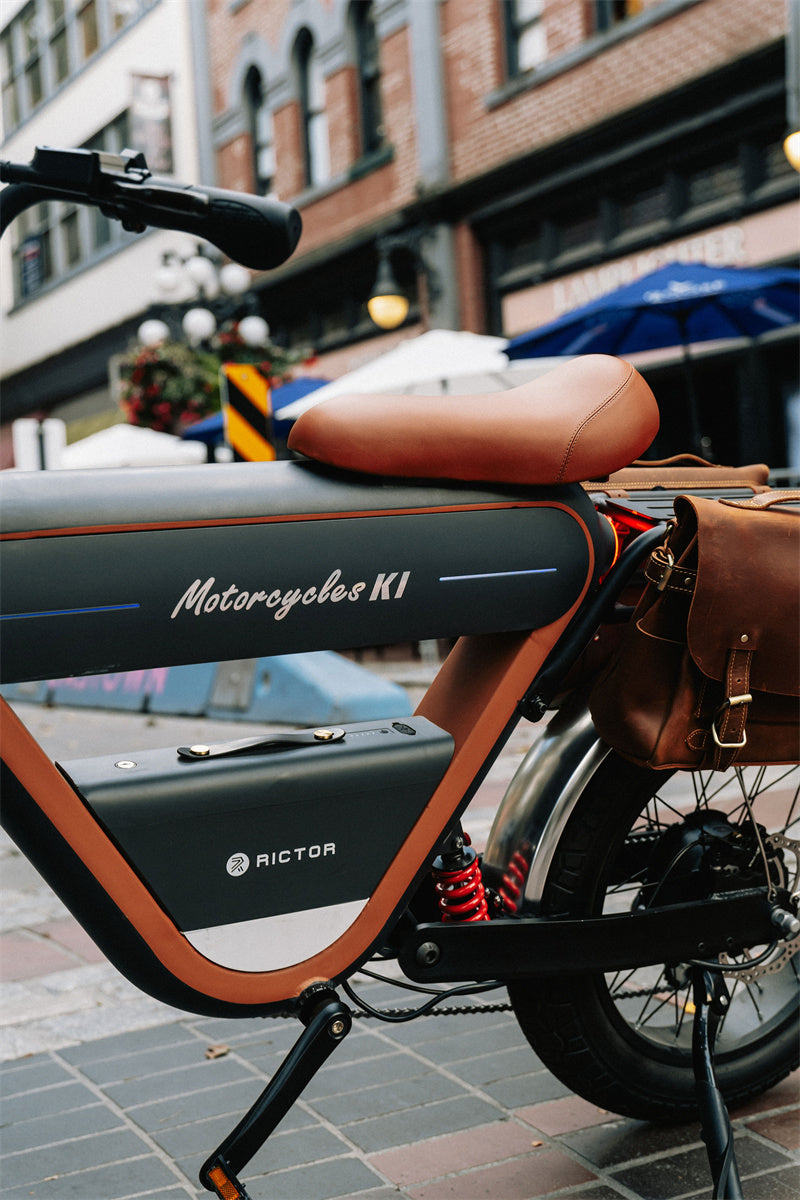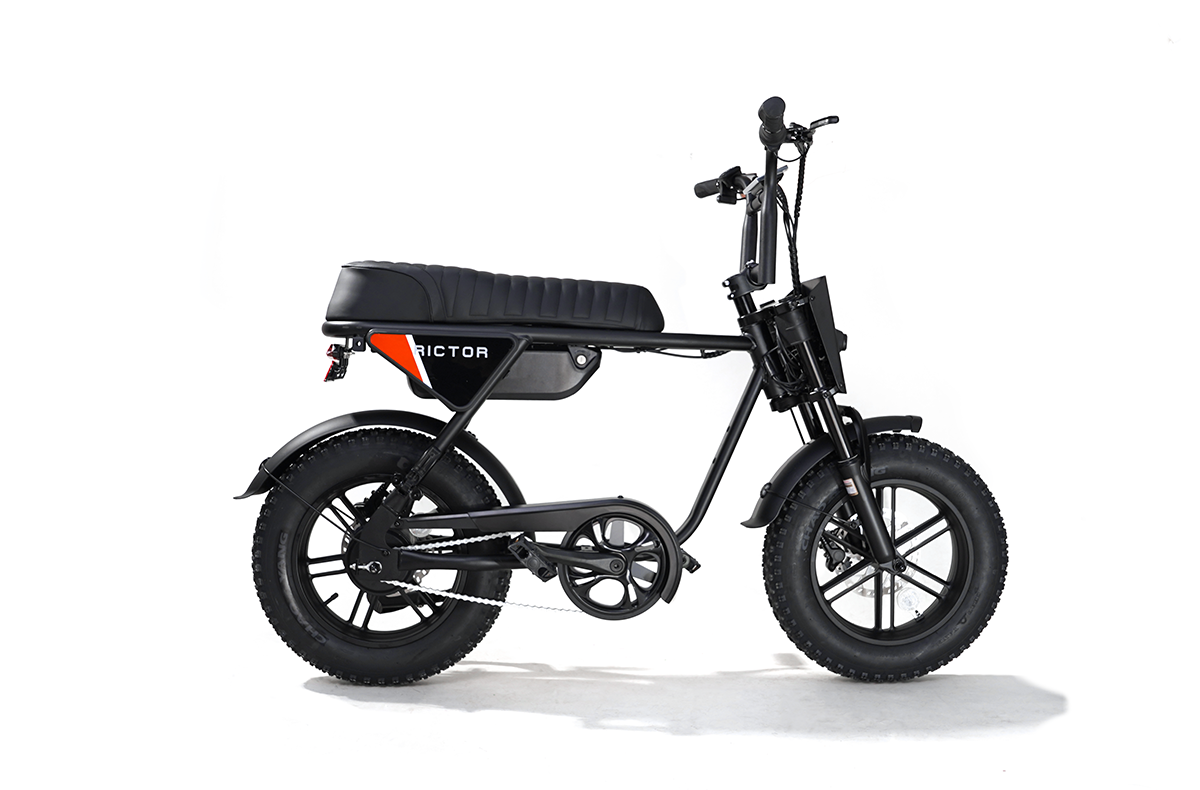
How to Deep Clean Your Electric Bike Motor
Electric bike motors are the heart of any bike, providing the power and torque that riders rely on for smooth, consistent rides.
Over time, these motors can accumulate dirt, grime, and debris, which can affect their performance and longevity.
Regular deep cleaning of your electric bike motor not only helps maintain optimal performance but also extends its lifespan.
In this guide, we will walk you through the steps to deep clean an electric bike motor effectively, ensuring it continues to function at its best.
Rictor K1 electric bike is known for its high-quality motor, offering reliable power for a smooth ride.
Why Clean an Electric Bike Motor
Dirt and debris can build up inside the motor housing and around critical components.
This buildup can cause overheating, increased friction, and eventually, motor failure.
By keeping the motor clean, you can avoid these issues and ensure smoother performance.
Tools and Materials You’ll Need
To properly deep clean your electric bike motor, you’ll need the following items:
-
A soft brush (e.g., a toothbrush or a paintbrush)
-
Compressed air canister
-
Microfiber cloths
-
Mild detergent or degreaser
-
Isopropyl alcohol
-
Water spray bottle (optional)
-
Small screwdriver (for motor disassembly, if needed)
-
Water-resistant lubricant (for re-lubricating components)
-
Rubber gloves (optional but recommended)
SEE ALSO How to Fix Electric Bike Hall Sensor

Step 1: Preparation and Safety
Before starting the cleaning process, always ensure that your electric bike is powered off and unplugged from any charging source.
If your motor is removable, detaching it from the bike frame may make cleaning easier.
Be sure to check your bike’s user manual for instructions on safely removing the motor without damaging the wiring or other components.
Remove the Battery
For safety, the first step in any maintenance procedure is to remove the battery.
Most electric bikes have a simple release mechanism to disconnect the battery pack.
Never clean the motor while the battery is still attached, as it can pose electrical hazards.
Disassemble the Motor (if applicable)
Some ebike motors can be disassembled for more thorough cleaning.
If your motor has removable covers or panels, use a small screwdriver to carefully remove them.
Take note of the screws' positions and any wires or connections that may be exposed.
If your motor does not disassemble, don’t worry—most cleaning can be done externally.
But for those who want to go the extra mile, internal cleaning may be necessary if there’s a significant build-up of grime inside.
Step 2: External Cleaning
The exterior of the motor tends to collect the most dirt, especially after rides in dusty or muddy conditions. Here’s how to clean it:
Brush Off Loose Debris
Use a soft brush to gently remove any loose dirt or dust from the exterior of the motor.
Be cautious not to apply too much pressure, as this could push debris further into the motor housing or damage delicate components.
Wipe with a Microfiber Cloth
Once the loose dirt has been removed, take a damp microfiber cloth and gently wipe the exterior of the motor.
A small amount of mild detergent mixed with water can be used to remove stubborn grime.
Make sure the cloth is only lightly damp to avoid moisture seeping into the motor.
Compressed Air for Tight Spots
For hard-to-reach areas, such as vents or crevices around the motor housing, use compressed air to blow out dust and dirt.
Hold the nozzle at a slight distance and spray in short bursts to avoid forcing debris further into the motor. Be especially careful around connectors and wiring.

Step 3: Cleaning the Internal Components
If you’ve disassembled the motor, now is the time to clean the internal components.
Wipe Down the Motor Internals
Use a clean, dry microfiber cloth to wipe down the internal parts of the motor.
If there is stubborn grease or dirt buildup, you can use a small amount of isopropyl alcohol on the cloth to help dissolve and remove it.
Be sure to dry each component thoroughly before reassembling the motor.
Degreasing (If Necessary)
If your motor’s internal gears or bearings are coated in excessive grease or dirt, you can use a mild degreaser to clean them.
Apply the degreaser with a cloth, and be careful to avoid getting any in the electrical components.
Once clean, allow the parts to air-dry or wipe them with a clean cloth.
Use Compressed Air for Internal Cleaning
Just as with the external parts, you can use compressed air to remove debris from tight spaces within the motor.
Ensure all debris is cleared out before moving on to the next step.
Step 4: Reassemble and Lubricate
Once all components are clean and dry, it’s time to reassemble the motor (if you took it apart).
Carefully reconnect any wires or parts, ensuring everything is in the correct position.
Apply Lubrication
Once the motor is reassembled, apply a water-resistant lubricant to the moving parts of the motor.
This will help reduce friction and ensure smooth operation. Be careful not to over-lubricate, as excess oil can attract dirt.
Step 5: Final Cleaning Touches
With the motor reassembled and lubricated, take one last pass with a microfiber cloth to remove any lingering dust or smudges from the exterior.
Make sure the motor is dry before reattaching it to your electric bike.
Check the Connections
Finally, inspect all electrical connections to ensure they are clean and secure.
Dirt or corrosion on connectors can interfere with the motor's performance.
If necessary, use a bit of isopropyl alcohol and a cotton swab to clean any dirty contacts.
Step 6: Reattach the Motor and Battery
Once everything is clean and dry, reattach the motor to your bike.
Make sure it is securely fastened, and all connectors are in place.
Afterward, reattach the battery, ensuring it's locked into place properly.
Preventing Future Dirt Buildup
To keep your electric bike motor running smoothly for as long as possible, there are a few preventive measures you can take:
Avoid riding in extreme conditions such as deep mud or water, which can lead to motor clogging.
Use mudguards or fenders to reduce the amount of dirt and debris that reaches the motor.
Regularly inspect and clean your motor after riding, especially after particularly dirty or wet rides.
By maintaining a consistent cleaning routine, you can extend the life of your electric bike motor and ensure it continues to perform optimally.
FAQs
Can I use a household vacuum cleaner to clean my electric bike motor?
No, using a household vacuum cleaner is not recommended for cleaning an electric bike motor. The suction may be too strong and can potentially dislodge small components or force dust deeper into the motor housing. It’s better to use compressed air or soft brushes for cleaning.
What type of lubricant should I use after cleaning the electric bike motor?
It’s best to use a water-resistant lubricant designed for bicycles or electric motor parts. Avoid using standard household oils, as they may attract dust or break down under high temperatures.
Should I disconnect the display and throttle before cleaning the motor?
Yes, it’s a good idea to disconnect both the display and throttle if your bike has these features. Doing so can help prevent accidental activation of the motor while cleaning and reduce the risk of electrical damage.



